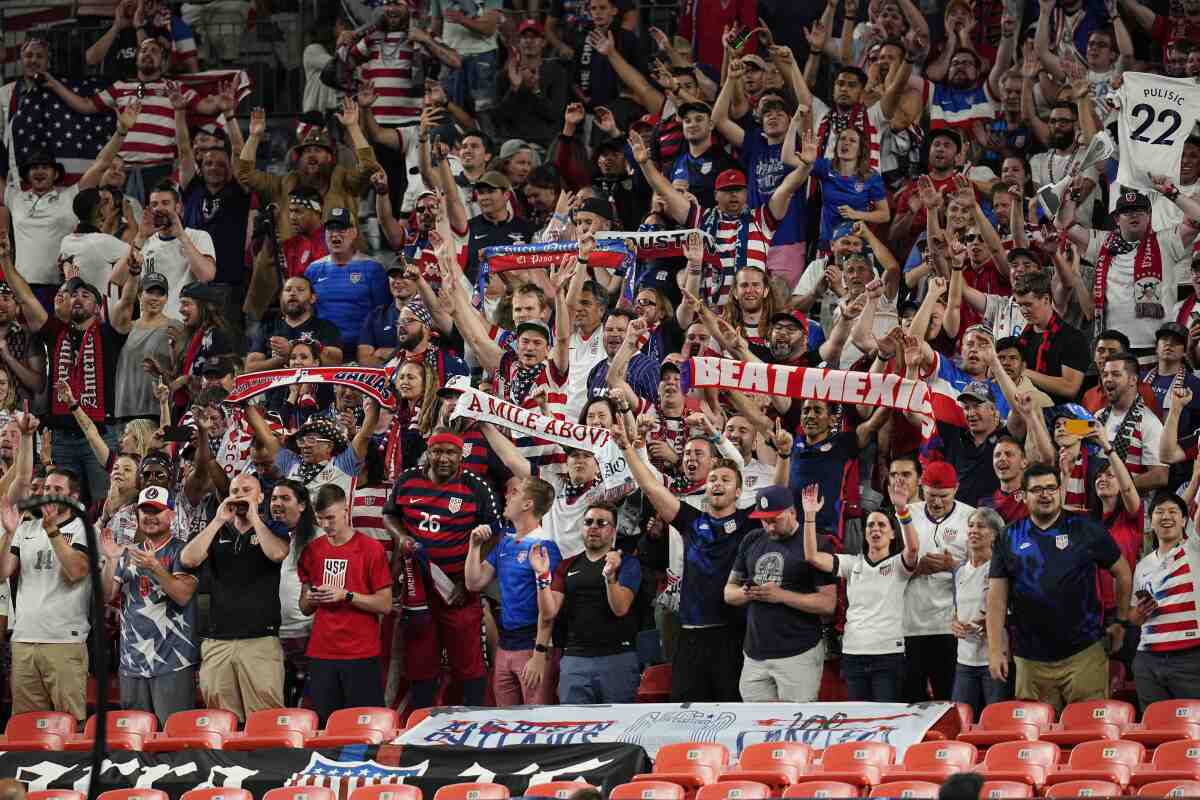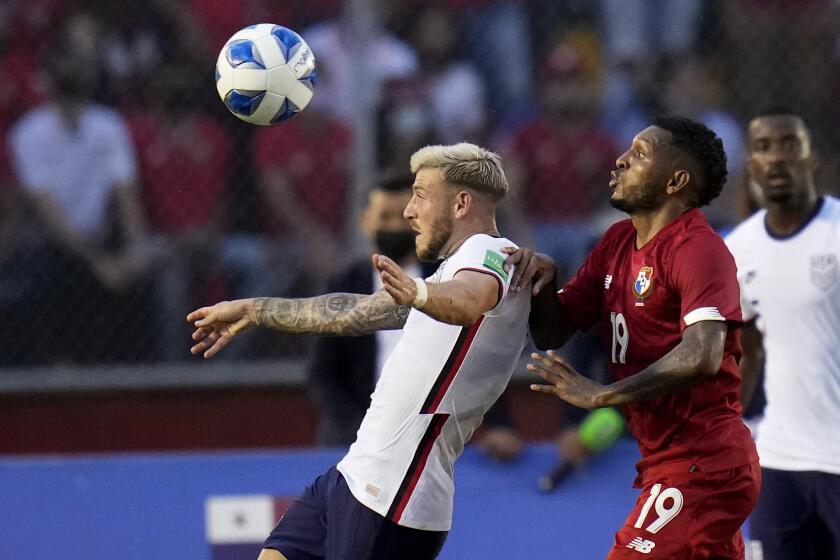Meet the person who schedules USMNT World Cup qualifiers in front of friendly fans

- Share via
COLUMBUS, Ohio — Whether the men’s national team qualifies for next fall’s World Cup may ultimately be decided by a 40-year-old woman who hasn’t kicked a soccer ball competitively since middle school.
In a low-scoring sport in which home-field advantage is often a deciding factor, where a game is played is often as important as how it’s played. And it’s Amy Hopfinger’s job to assure the U.S. has that advantage in one of the largest and most diverse countries in the world.
“There has to be a lot of thinking and planning behind these venues,” said Bruce Arena, who has coached more World Cup qualifiers than anyone in U.S. Soccer history. “There’s no margin for error.”
Judging by the team’s record, Hopfinger hasn’t made many. Since she joined the events department at U.S. Soccer before the 2006 World Cup, the Americans have gone 18-3-1 in home qualifiers. On the road, against the same opponents, the U.S. went 7-9-7.
Hopfinger’s next test comes Wednesday when the U.S. (2-1-2) plays host to Costa Rica (1-1-3) at newly christened Lower.com Field in Columbus, Ohio. The Americans, who have struggled offensively in the qualifying tournament, are coming off a 1-0 road loss in Panama but are hopeful that midfielder Weston McKennie will be available after missing the last game with a quadriceps injury.
Most CONCACAF countries have one national stadium where they play all their qualifiers. The U.S. moves around its continent-sized country, giving more fans a chance to see the team in person while avoiding cities with large populations that might favor the visitors.
The USMNT needs to summon grit and determination that was missing during recent World Cup qualifying matches to get back on track when it faces Costa Rica on Wednesday in Columbus, Ohio.
Threading that needle can be difficult.
“There’s a lot of factors that come into play when we choose a venue. But we always look at the same list of about 30-something factors,” said Hopfinger, U.S. Soccer’s vice president for events. “First is, how do we make sure we get three points? And when you really focus and hone in on that, a few factors rise to the top.”
Travel is one. In the current qualifying cycle, with three games in seven days, getting from one place to another quickly is important. And with so many U.S. players coming from Europe, the West Coast was not an option.
“Any time we can get a home-field advantage, we want to do so,” said coach Gregg Berhalter, who works closely with Hopfinger on site selection. “Some things we take into consideration are travel, weather, atmosphere, field conditions, field size, where we’re going next.”
The recent construction boom in MLS, which has produced nine soccer-specific stadiums and an equal number of training facilities in the last seven years, also has been a factor. That’s why Wednesday’s game will be the 15th consecutive home qualifier the U.S. has played in an MLS stadium.
“When you think about the design of these MLS stadiums, the architect crews have done a ton of work and also studied how to create this environment that’s going to be really conducive to soccer,” said Berhalter, who will be coaching the national team for the first time in Columbus, where he had a successful five-year run as coach of the MLS Crew. “It’s important.”
The modest size of most MLS stadiums also gives U.S. Soccer more control over the makeup of the crowd. The federation could fill any NFL stadium in the country for next month’s qualifier with Mexico, for example. But the game will be played in TQL Stadium, FC Cincinnati’s new 26,000-seat home, where the federation can ensure a pro-American crowd.
“We know we are leaving money and financial opportunity on table,” Hopfinger said. “But making sure we qualify for the World Cup is first and foremost.”
With that in mind, few factors are bigger than demographics. Four years ago, the U.S. played its home qualifier with Costa Rica at Red Bull Arena in New Jersey, the state with the largest concentration of Costa Ricans in the country. The stadium wound up a sea of red and the Americans lost, 2-0. Six weeks later they fell a point shy of a World Cup berth.
“We too often are nice hosts,” said Arena, who coached that U.S. team. “We play Costa Rica in Red Bull Arena [in Harrison, N.J.]. We considered, before I came in, playing Mexico in Los Angeles, which is kind of ridiculous.”
Avoiding those mistakes can be difficult in a country like the U.S., home to massive populations with family ties to every CONCACAF nation.
“That’s one of the unique parts about our country,” Hopfinger said. “It’s a detriment to us when we’re trying to cherry-pick in some of these places, but I think we’ve been successful.
“Maybe it’s not a 10 out of 10. But we are continuing to work at this and focus on what matters and what makes the most sense for us.”








